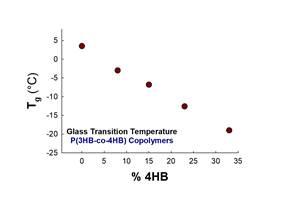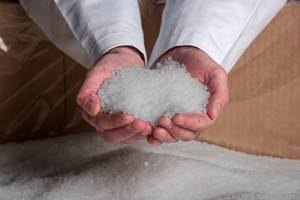Sutco Managing Director Speaks on Policy Needs for Ensuring Recycling Material Flows Prioritize Sustainability
In a VDMA interview, Michael Ludden discussed the future of recycling and the interactions between chemical and mechanical.
The German Engineering Federation, VDMA, conducted the following interview with Michael Ludden, managing director at Sutco Recycling. Mr. Ludden discussed the current state of chemical recycling, warning that potential for mechanical and chemical recyclers to compete for the same material flows should not be ignored.

Michael Ludden, managing director at Sutco
Photo Credit: Sutco
Mr. Ludden, what potential does chemical recycling have in your view?
The potential is clearly between mechanical processing and energy recovery. When incinerating, only the energy of the plastic waste is used, the material itself is lost; therefore, new material has to be obtained from fossil resources. But unlike mechanical recycling, chemical recycling breaks down these compounds instead of utilizing existing polymers as material.
In practice, in which area is it feasible?
For me, chemical recycling becomes feasible whenever mechanical recycling proves difficult. It makes sense to break up the carbon compounds, clean them and polymerize them again. That is not taking place at the moment, however. Unfortunately, the crux of the matter is that chemical recycling currently only deals with reprocessing of polyolefins such as polypropylene and polyethylene. These plastics consist only of chains made up of carbon and hydrogen. The large amount of other plastics that also contain nitrogen, sulfur or oxygen is not the focus of chemical recyclers, because these substances interfere with pyrolysis. However, polyolefins can be processed very well in mechanical recycling. This type of recycling is ecologically much more sensible because the plastics remain intact in their composite structure. Firstly, no material is destroyed, and secondly, fewer resources, less energy and less water are required for reprocessing. If chemical recyclers now also use the material that the mechanical recyclers can process very well, this will lead to a cannibalization of the material flows. This must be prevented at all costs.
With which approach?
It is the task of politics to prevent this. In principle, there is a legally defined five-level waste hierarchy. Mechanical recycling is of higher value than chemical recycling. This principle must not be disrupted. Efforts to sync mechanical and chemical recycling are already underway; however, in my view, this is very dangerous, as it would have a considerably negative impact on the environment. However, the environment must always be the main priority.
Isn't the lack of economic viability thwarting the progress of chemical recycling?
From today's perspective, large-scale chemical recycling may not be economical, but that could all change in the years ahead. Ten years ago, you wouldn't have thought that you could get more money for recyclates than for virgin material. What we call uneconomical today may well prove to be economical in the future given a different political framework. It is important that politics steer developments in such a way as to enable a permanently sensible future utilization of chemical recycling, with the assurance that mechanical and chemical recycling complement each other optimally. This would mean, for example, that polyolefins are not chemically recycled. Once again, cannibalization would be the worst solution, because it would lead to environmental damage.
To what extent does chemical recycling affect Sutco's business?
It does not affect our business model; on the contrary, as Sutco builds sorting plants, which are absolutely necessary in mechanical recycling before the actual processing of the material, but are also indispensable for chemical recycling. We have already received several inquiries.
How will chemical recycling develop?
Chemical recyclers are currently in a pilot phase. The procedures are all only running on a small scale. Some plants have a capacity of maybe 10,000 tonnes a year. By comparison, we are building sorting plants for 100,000 tonnes today. Chemical recyclers will face problems that many don't even see yet. On a small scale, they often don't even materialize. One example is the treatment of foreign elements like sulfur or nitrogen. At 5,000 tonnes a year, the end product is still acceptable. At 100,000 tonnes, you suddenly have a large waste stream that has to be treated, resulting in the necessity to build desulfurization plants and much more, something that will become very expensive. And that is one of the reasons why I am convinced that mechanical recycling will always be cheaper than chemical recycling. That's why the main material flows will go into mechanical recycling. Still, policymakers have to be careful not to make mistakes in that regard.
What’s your view on quotas for the use of recycled material?
I am absolutely in favor of a product-related recyclate input quota. It will boost the market for recyclates enormously, and thereby also ensure that the material flows become greater. Subsequently, anyone who produces a hair shampoo, for example, must ensure that their packaging bottle has the specified recycled content. In return, they have to pay the supplier the requested price. When supply becomes scarce, prices will rise. This creates a pull from the market into recycled plastics, and consequently more will be invested in recycling plants. If you plan a sorting plant and a processing plant today, you have to be able to expect a continuous input over several years and a continuous output at a reasonably constant price. Then the material quantities also increase. That is why recyclate quotas are so important. But at the same time, policymakers must see to it that chemical recycling does not absorb these material quantities. These are their two main tasks. If they can manage that, then many things will become feasible.
Related Content
Film Extrusion: Boost Mechanical Properties and Rate of Composting by Blending Amorphous PHA into PLA
A unique amorphous PHA has been shown to enhance the mechanical performance and accelerate the biodegradation of other compostable polymers PLA in blown film.
Read More‘Monomaterial’ Trend in Packaging and Beyond Will Only Thrive
In terms of sustainability measures, monomaterial structures are already making good headway and will evolve even further.
Read MoreHow to Optimize Injection Molding of PHA and PHA/PLA Blends
Here are processing guidelines aimed at both getting the PHA resin into the process without degrading it, and reducing residence time at melt temperatures.
Read MoreInside the Florida Recycler Taking on NPE’s 100% Scrap Reuse Goal
Hundreds of tons of demonstration products will be created this week. Commercial Plastics Recycling is striving to recycle ALL of it.
Read MoreRead Next
Making the Circular Economy a Reality
Driven by brand owner demands and new worldwide legislation, the entire supply chain is working toward the shift to circularity, with some evidence the circular economy has already begun.
Read MoreFor PLASTICS' CEO Seaholm, NPE to Shine Light on Sustainability Successes
With advocacy, communication and sustainability as three main pillars, Seaholm leads a trade association to NPE that ‘is more active today than we have ever been.’
Read MoreLead the Conversation, Change the Conversation
Coverage of single-use plastics can be both misleading and demoralizing. Here are 10 tips for changing the perception of the plastics industry at your company and in your community.
Read More

























